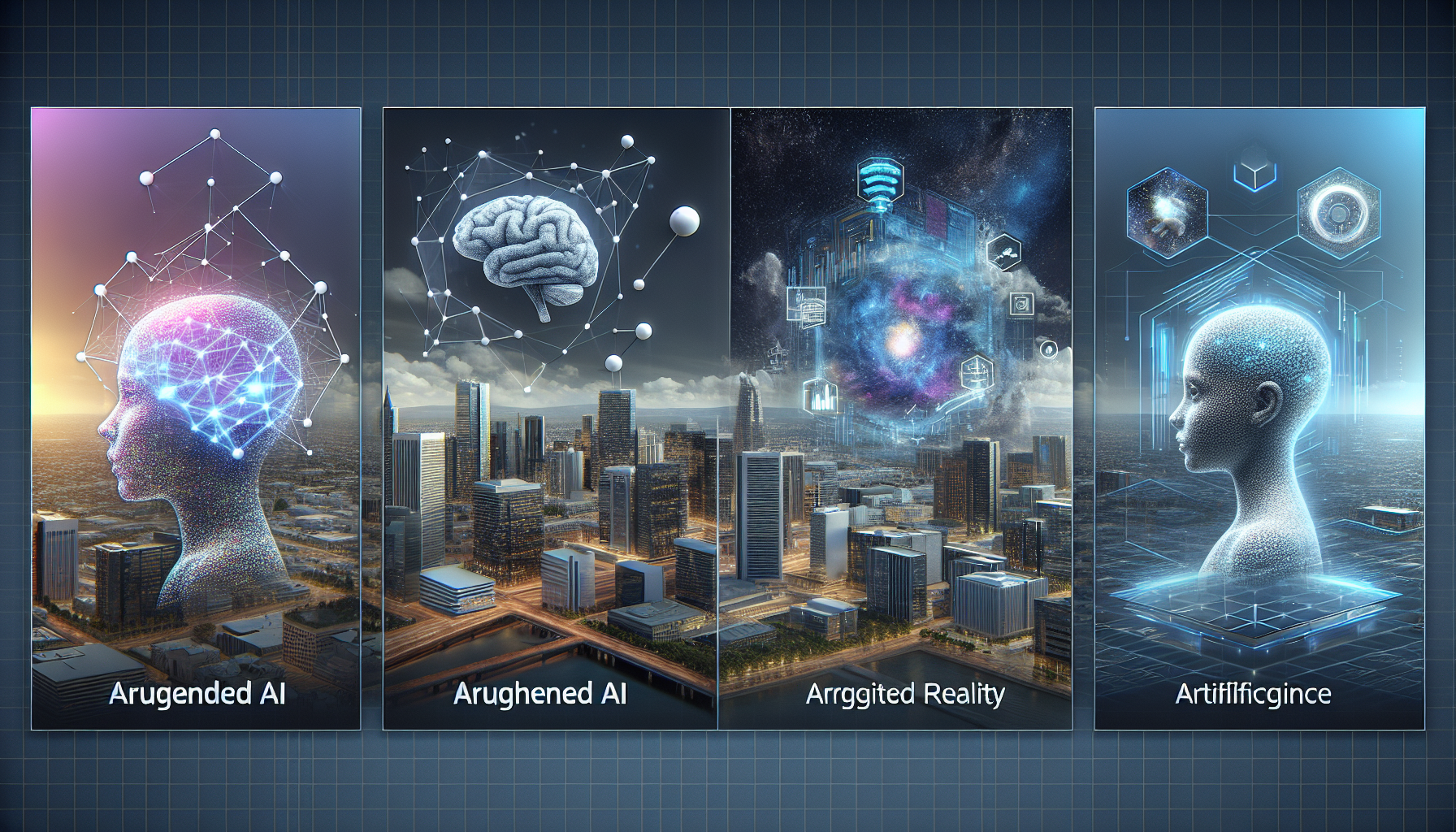Augmented AI vs. Augmented Reality vs. AI: Unraveling the Differences
Understanding the distinctions and relationships between Augmented AI, Augmented Reality (AR), and Artificial Intelligence (AI) is crucial, as these terms are often used interchangeably but refer to fundamentally different concepts. In this article, we'll delve into the definitions, key applications, and core purposes of each technology, as well as explore their intersections and differences.
Artificial Intelligence (AI)
Definition:
AI refers to computer systems or software that simulate human intelligence processes such as learning, reasoning, and problem-solving. AI enables machines to process data, recognize patterns, make predictions, and make decisions autonomously or assistively.
Key Applications:
- Chatbots (e.g., ChatGPT)
- Object recognition
- Recommendation engines
- Autonomous vehicles
Core Purpose: To automate cognitive functions, process information, and provide intelligent responses or actions.
Augmented Reality (AR)
Definition:
AR is a technology that overlays digital information (visual, audio, or other types) onto the real world, enhancing the user's perception and interaction with their real environment. Unlike virtual reality (VR), which creates a fully simulated environment, AR blends digital elements with the physical world.
Key Applications:
- Gaming (e.g., Pokémon GO)
- Product visualization (e.g., IKEA Place app)
- Education and training
- Industrial design and maintenance
- Marketing and retail experiences
Core Purpose: To enhance real-world experiences by providing additional digital information, making environments more interactive and informative.
How AI Enhances AR:
AI powers AR by enabling real-time object recognition, environment mapping, and contextual awareness. For example, an AR app that lets you place virtual furniture in your room uses AI to detect walls, floors, and objects to accurately overlay digital models.
Augmented AI
Definition:
Augmented AI (sometimes called "intelligence augmentation") refers to the use of AI to enhance or assist human intelligence, rather than replace it outright. Augmented AI systems are designed to work collaboratively with humans, supporting decision-making and amplifying human strengths.
Key Applications:
- Decision support systems in healthcare, finance, and customer service
- AI-powered analytics tools that suggest insights but leave final decisions to humans
- Virtual assistants that help users perform complex tasks more efficiently
Core Purpose: To support and enhance human capabilities by providing AI-driven insights, recommendations, or automation, while keeping humans "in the loop" for oversight and final judgment.
Key Differences and Intersections
- AI is the core intelligence technology that can operate independently or power other technologies.
- AR is a visual interface technology that overlays digital content onto the real world and often uses AI for tasks like object recognition and scene understanding.
- Augmented AI is a collaborative approach, using AI to extend human abilities rather than automate them away.
In summary:
- AI provides the intelligence.
- AR provides the immersive, enhanced interface.
- Augmented AI provides the partnership between human and machine intelligence.
These technologies increasingly overlap, with AI making AR experiences smarter, and Augmented AI leveraging both AI and AR to create powerful, context-aware tools for human users.
For instance, conversational AI in retail and ecommerce can be enhanced with AR to provide immersive product experiences, while Augmented AI can support customer service agents with AI-driven insights and recommendations. Similarly, advanced large language models (LLMs) like GPT-4.5, Claude 4.0, and Mistral Large 2 are pushing boundaries in AI, which can, in turn, be used to power more sophisticated AR and Augmented AI applications.
By understanding the differences and relationships between AI, AR, and Augmented AI, businesses and individuals can harness the full potential of these technologies to drive innovation, improve decision-making, and create more intuitive and interactive experiences.
Remember, the key to unlocking the true potential of AI, AR, and Augmented AI lies in recognizing their distinct strengths and weaknesses, as well as their areas of overlap and intersection. By doing so, we can create a future where humans and machines work together in harmony, driving progress and innovation in countless industries and aspects of life.
Read Next
- Federated Learning: How Privacy-Preserving AI Is Revolutionizing Data Collaboration
- Advanced Large Language Models (LLMs): New versions like GPT-4.5, Claude 4.0 and Mistral Large 2 are pushing boundaries
- Retail Chatbots for Businesses - 2025
- Demystifying GPT Models: Leveraging Advanced AI for Business Innovation
- Conversational AI in Retail and Ecommerce - 2025 Edition

